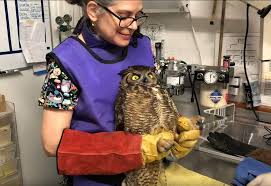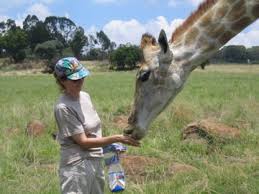When we talk of caring for the wilds, it generally refers to the practice of caring for and rehabilitating wild animals that have been injured, orphaned, or otherwise in need of assistance. This can include providing medical care, shelter, and food until the animal is able to be released back into the wild.
Wildcare can be performed by professional wildlife rehabilitators or by volunteers who have received training in how to properly care for wild animals.
The goal of wildcare is to give these animals a second chance at life in their natural habitat, and to ensure that they are healthy and able to survive on their own.
It is important to note that wild animals should generally not be kept as pets, as they have complex needs and require specialized care that most people are not equipped to provide.
If you come across a wild animal in need of assistance, it’s best to contact a licensed wildlife rehabilitator or animal control agency for help.
Read Also: Wild Snake: Description, Health and Nutrition
How to Care for the Wild

Caring for the wild is crucial to maintaining a healthy and thriving ecosystem. Here are some tips on how to care for the wild:
Respect wildlife: Observe wildlife from a safe distance and avoid disturbing their natural behavior. Do not feed them or touch them.
Reduce, reuse, and recycle: Properly dispose of trash and recycle as much as possible. Litter can harm wildlife, and reducing waste helps conserve natural resources.
Conserve water: Use water efficiently, and avoid wasting it. Water is a precious resource, and conserving it can help protect the habitats of many species.
Reduce your carbon footprint: Choose sustainable transportation options, reduce your energy consumption, and support renewable energy sources. Climate change is one of the biggest threats to wildlife, and reducing our carbon footprint can help protect them.
Support conservation efforts: Donate to conservation organizations, volunteer for wildlife monitoring programs, and support laws and policies that protect wildlife and their habitats.
Educate others: Share your knowledge about the importance of caring for the wild with others. Encourage them to take actions that help protect wildlife and their habitats.
By following these tips, we can all help care for the wild and protect the amazing biodiversity of our planet.
The Importance of Caring for the Wild
Caring for the wild is important for several reasons, including:
Biodiversity: The wild is home to a vast array of plant and animal species, and conserving these species helps maintain biodiversity.
Biodiversity is essential to the functioning of ecosystems, and helps support essential ecosystem services like air and water purification, soil fertility, and nutrient cycling.
Ecosystem health: The health of wild ecosystems is critical to the health of our planet. Wild ecosystems provide important ecological functions like carbon storage, nutrient cycling, and water regulation.
Climate change: Protecting the wild is essential to mitigating the impacts of climate change. Wild ecosystems like forests and wetlands help sequester carbon from the atmosphere and store it in plant biomass and soil.
Human well-being: The wild provides essential resources for human well-being, including food, medicine, and recreation. By caring for the wild, we can help ensure the sustainability of these resources for future generations.
Ethical considerations: As humans, we have a moral responsibility to care for the wild and the species that call it home. We have a duty to protect biodiversity and to prevent harm to the natural world.
Caring for the wild is important for maintaining biodiversity, promoting ecosystem health, mitigating the impacts of climate change, supporting human well-being, and fulfilling ethical responsibilities.
Keepers of the Wild Nature Park

Keepers of the Wild Nature Park is a wildlife sanctuary and nature park located in Valentine, Arizona, USA. The park was established in 1995 by Jonathan Kraft and his wife, Kelsey, as a nonprofit organization dedicated to rescuing and caring for exotic animals that have been abused, neglected, or abandoned.
Keepers of the Wild is home to over 150 animals, including tigers, lions, bears, wolves, and primates. Many of these animals were rescued from private individuals who kept them as pets, circuses, and roadside attractions.
The park provides a safe and healthy environment for these animals, and works to educate the public about the dangers of keeping exotic animals as pets.
In addition to providing sanctuary for rescued animals, Keepers of the Wild offers educational programs for visitors. The park offers guided tours, school programs, and educational outreach programs to teach the public about wildlife conservation, responsible pet ownership, and the dangers of the exotic animal trade.
Overall, Keepers of the Wild Nature Park plays an important role in caring for and protecting exotic animals, as well as educating the public about the importance of wildlife conservation.
The park serves as a model for other wildlife sanctuaries and organizations that are dedicated to protecting and preserving our planet’s natural resources.
Read Also: Leafhopper or Jassid – Symptoms and Damage Prevention
Animal Reuse and Rehabilitation
Animal rescue and rehabilitation is a core mission of Keepers of the Wild Nature Park. The park is dedicated to rescuing and providing lifelong care for animals that have been abused, neglected, or abandoned.
Many of the animals at the park have been rescued from the exotic animal trade, private owners, or other facilities that could no longer care for them.
When animals arrive at Keepers of the Wild, they undergo a comprehensive evaluation by the park’s veterinary team to assess their health and behavioral needs.
The park’s staff then designs a customized care plan for each animal that includes a balanced diet, regular medical check-ups, and behavioral enrichment activities to keep the animals physically and mentally stimulated.
Keepers of the Wild’s rehabilitation program is designed to provide a safe and healthy environment where animals can heal and recover from the trauma they have experienced.
The park’s staff works to create a stress-free environment where animals can thrive, and takes a holistic approach to their care that includes physical, mental, and emotional support.
The rehabilitation program at Keepers of the Wild has been successful in helping animals recover and regain their health.
Many of the animals that arrive at the park have suffered from malnutrition, physical injuries, and emotional trauma, but with the proper care and rehabilitation, they are able to live happy and healthy lives.
Additionally, Keepers of the Wild Nature Park’s animal rescue and rehabilitation program is an essential part of its mission to protect and care for exotic animals.
By providing a safe and healthy environment for animals to heal and recover, the park is able to give these animals a second chance at life.
Read Also: Is Automation Technology Bad?
Frequently Asked Questions
We will update this section soon.

